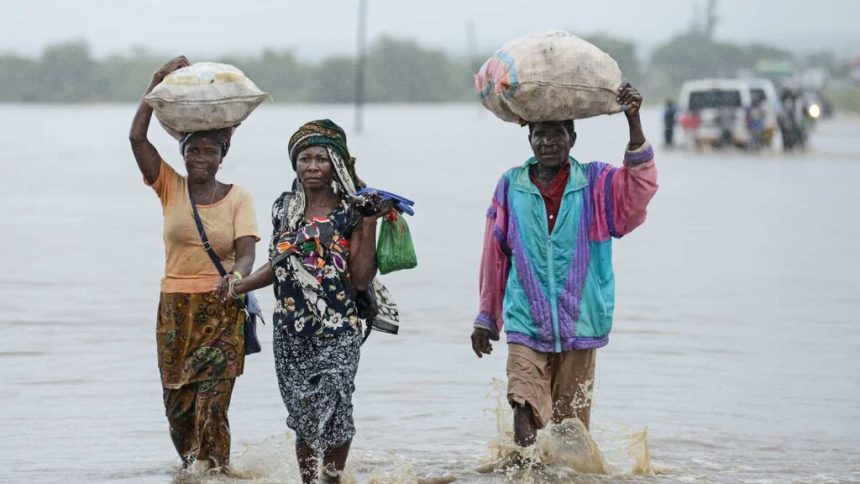By 2050, water crises such as floods, droughts and storms could internally displace almost 32 million people and force around 11 million to cross borders each year, according to the worst-case scenario in the study "To understand climate mobility, follow the water", carried out by the Boston Consulting Group (BCG)..
According to a Negócios newspaperIn 2022, 99% of travel related to natural disasters was caused by water-related events, and this trend is likely to intensify in the coming decades if effective actions are not implemented to mitigate the impact of climate change, says the global consultancy.
Climate mobility, which is the voluntary or forced movement of people in response to the impacts of climate change, is "a growing reality and water is the dominant force driving it, more than any other environmental factor," says BCG. This is because disruptions in the natural water cycle caused by droughts, storms and floods lead to altered water patterns, affecting the quality and quantity of water, which causes economic and political instability, worsening society's ability to mitigate and adapt to the effects of these changes, the study shows.
"Climate change, namely the increase and greater variation in global temperatures, has mainly affected the quantity, availability and quality of water, generating economic, political and social impacts," says Manuel Luiz, executive director and partner at BCG in Lisbon. "The forced mobility of populations worldwide is mainly caused by water-related natural disasters, which reinforces the need to accelerate the energy transition and reduce carbon emissions. Furthermore, in those events that cannot be prevented, it is imperative to implement social actions that alleviate the impact of water disasters on the population."
BCG has developed a model guided by climate-induced changes in water patterns, to predict the consequent internal and external movement of people by 2050, compared to 2020 records. To do this, it used scenarios developed by the Intergovernmental Panel on Climate Change (IPCC), based on different levels of mitigation of greenhouse gas emissions.
A trajectory assumes continuous mitigation efforts to reduce greenhouse gases (GHG). The scenario emphasizes respect for environmental limits and better management of the global commons, particularly water. In this scenario, despite mitigation efforts, an increase of around 1% in internal climate mobility and 2.5% in travel between different countries is still expected.
A second scenario is based on business as usual, which assumes a peak in emissions in 2040, assuming global climate policies and moderate technological advances. Global income growth will be uneven and the environment will continue to deteriorate, despite slight improvements. In this scenario, an increase in internal climate mobility of approximately 14% and almost 3% externally is expected.
The third projection is the worst-case scenario. It assumes little or no effort to mitigate emissions, a high dependence on fossil fuels and very limited progress in the adoption of green technologies. There will be considerable development of human capital and technology, and the population is expected to grow. In this scenario, the increase in climate mobility could amount to 33% domestically and 3% for cross-border travel.
Regionally, Africa, Australia, the Middle East and Central Europe face the greatest risk of increased flooding in all three scenarios, although the frequency of such events is more likely in the most severe scenario.
As for the risk of droughts, Central Europe, Latin America and Southeast Asia are the most susceptible, but the risk will increase for other regions in the absence of more rigorous climate mitigation efforts, underlining the urgent need for adaptation strategies.
In this context, BCG suggests three mechanisms to help mitigate the negative consequences of climate change, namely water crises and the resulting climate mobility.
In the consultant's view, it will be necessary to design solutions based on nature and the restoration of existing infrastructures in order to improve the capacity to adapt to extreme water events. In addition to improving water resilience, it also ensures that its benefits are long-lasting and equitably distributed. It also recommends bridging the gap between water resilience and social resilience.
"Collaboration is the key to mitigating water crises and climate mobility. In this sense, there must be mutual help across organizational boundaries to bring together ideas, people and resources, as well as to develop innovative financing mechanisms that benefit displaced people," the analysts argue.
(Photo DR)



Leave a Reply